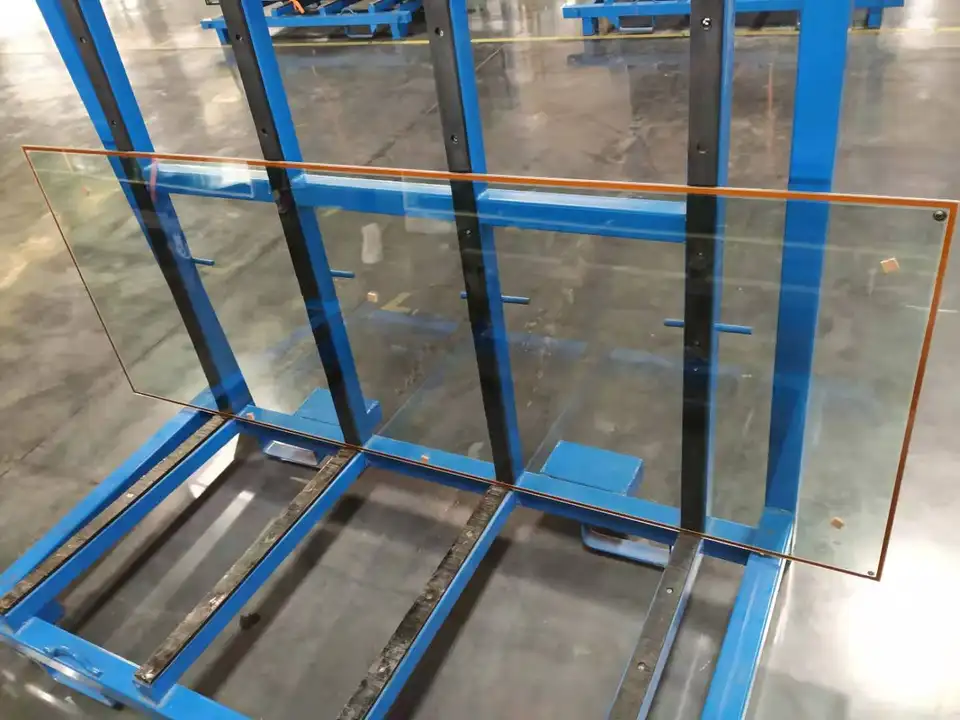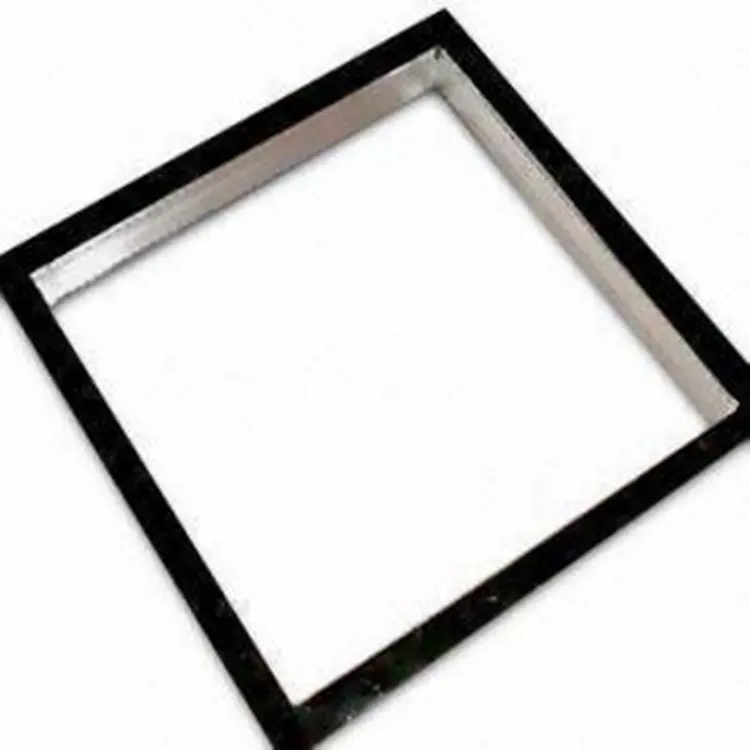
1. What is Low-E glass?
Low-E glass is low-emissivity glass, which is formed by coating the glass surface to reduce the emissivity E of the glass from 0.84 to below 0.15.
2. What are the characteristics of Low-E glass?
High infrared reflectivity, can directly reflect far infrared heat radiation.
The surface emissivity E is low, and the ability to absorb external energy is small, so the heat energy radiated is less.
The shading coefficient Sc has a wide range, and the amount of solar energy transmitted can be controlled according to the needs to meet the needs of different regions.

3. Why can the Low-E coating reflect heat?
The Low-E coating is coated with silver, which can reflect more than 98% of the far-infrared heat radiation, thus directly reflecting heat like a mirror reflecting light. The shading coefficient Sc of Low-E can be from 0.2 to 0.7, so that the direct solar radiation energy entering the room can be adjusted according to the needs.
4. What is heat reflective glass?
Heat reflective glass is commonly referred to as coated glass, which is formed by coating the glass surface to reduce the shading coefficient Sc of the glass from 0.98 (6mm transparent glass) to 0.2-0.6.
5. What is the functional difference between Low-E glass and heat reflective glass?
Heat-reflecting glass is to reduce the shading coefficient of the glass and limit the direct solar radiation to enter the room through the glass, so as to reduce the cost of air conditioning and save energy. Low-E glass is to reduce the U value of the glass and limit the far-infrared heat radiation to pass through the glass, so as to achieve the purpose of reducing the heat energy of convection and conduction through the glass. At the same time, the shading coefficient Sc of Low-E glass has a large adjustment range, which can effectively control the direct solar radiation entering the room.

6. What are the main types of mature coated glass technology?
There are two main types: online coating, vacuum magnetron sputtering coating (also known as offline coating). On-line coated glass is manufactured on a float glass production line. This type of glass has a single variety, poor heat reflection performance, and low manufacturing cost. Its only advantage is that it can be hot-bent. The coated glass manufactured by the vacuum magnetron sputtering process has a variety of varieties, excellent heat reflection performance, and obvious energy-saving characteristics. Its disadvantage is that it cannot be processed by hot bending.
7. Can Low-E glass be used as a single piece?
The Low-E glass manufactured by the vacuum magnetron sputtering process cannot be used in a single piece, but can only be used to synthesize insulating glass or laminated glass. But its emissivity E is much lower than 0.15, and can be as low as below 0.1. The Low-E glass manufactured by the online coating process can be used in a single piece, but its emissivity E=0.28, strictly speaking, it can no longer be called Low-E glass (scientifically, an object with an emissivity of E £ 0.15 is called low-emissivity object). Low-E glass is most effective in the similar enclosed space formed in the sealed insulating glass, because this enclosed space eliminates the air flow on the Low-E surface, so that the Low-E glass can work better.
8. Is the performance of Low-E glass the same?
From a technical point of view, all Low-E glass handles the spectral curve in the same way, but not all perform in the same way.

9. Do all Low-E glass look the same?
no the same! Some Low-E looks highly transparent, with a transmittance of more than 60% and a light color. Some Low-E looks low in transparency, the transmittance is below 55%, and the color is relatively dark.
10. Does Low-E glass still work at night?
yes! Low-E glass works day and night. In winter, heat (far-infrared heat radiation) will be reflected back to the room day and night, because the heat generated by heating or converted from solar energy exists in the form of far-infrared heat radiation.
11. How does Low-E glass work in summer and winter?
In winter, the indoor temperature is higher than the outdoor temperature, and the far-infrared heat radiation mainly comes from the room. Low-E glass can reflect it back to the room so as to keep the indoor heat from escaping. For part of the solar radiation from the outside, Low-E glass can still allow it to enter the room, and this part of the energy is absorbed by indoor objects and then converted into far-infrared heat radiation and left indoors. In summer, the outdoor temperature is higher than the indoor temperature, and the far-infrared heat radiation mainly comes from the outside, and the Low-E glass can reflect it to prevent the heat from entering the room. For outdoor solar radiation, Low-E glass with a low shading coefficient can be selected to limit its entry into the room, thereby reducing cooling costs (air conditioning costs).
12. Which surface of the insulating glass is the most suitable for the Low-E coating?
Insulating glass has 4 surfaces, the numbers from outdoor to indoor are 1#, 2#, 3#, 4# surfaces. In areas where the heating demand exceeds the cooling demand (northern area), the Low-E film layer is located on the 3# surface. Conversely, in areas where the cooling demand exceeds the heating demand (south area), the Low-E film layer should be located on the 2# surface.
13. What is the function of filling argon in insulating glass?
Argon is an inert gas, its thermal conductivity is worse than that of air, so filling it into the insulating glass can reduce the U value of the insulating glass and increase the heat insulation of the insulating glass. For Low-E insulating glass, argon can also protect the Low-E film layer.
14. What are the negative effects of ultraviolet rays?
Ultraviolet radiation is short-wave radiation, invisible to the naked eye, and it accounts for about 2% of the total energy of solar radiation. Ultraviolet rays can kill bacteria, but prolonged exposure can burn human skin and eyes, as well as fade furniture and clothing.
15. How much ultraviolet light can Low-E glass attenuate?
Compared with ordinary single-piece transparent glass, Low-E glass can reduce ultraviolet rays by 25%. Compared with heat-reflective coated glass, Low-E glass can reduce ultraviolet rays by 14%. Low-E glass cannot completely prevent furniture from fading, but it can slow down fading.

16. How does Low-E glass affect indoor plants?
There is no adverse effect on most common plants. For the impact on special rare plants, please consult the relevant flower experts.
17. Do sunshades, trees and awnings affect the performance of Low-E glass?
These objects can limit the heat and light entering the room through the glass window, that is, block part of the solar energy from passing through, but it does not affect the performance of Low-E glass.
18. Which direction is the best direction to install Low-E glass?
In winter, no matter which direction the Low-E glass faces, it will not affect its performance, because it mainly reflects the indoor heat. However, the effect of installing facing north is the best. After all, Low-E glass prevents indoor heat loss and also limits solar radiation to some extent. In summer, Low-E mainly reflects outdoor heat, so it is suitable to install in any direction, but the best effect is to install in the east, west, and south directions, because it can also reduce the penetration of solar energy.
19. How long does the Low-E coating last?
The duration of its coating layer is the same as the duration of the sealing of the insulating glass space layer.
20. What is the effect of combining Low-E glass with tinted glass?
There are three combinations: coating Low-E film on tinted glass, synthesizing insulating glass with tinted glass, and synthesizing laminated glass with tinted glass. The tinted glass can further reduce the shading coefficient of the combined glass product, thereby restricting more direct solar radiation from entering indoor. Therefore, the combined use of these three methods works well, and is more suitable for use in the southern temperate tropics. Combining with tinted glass can also greatly increase its decorative effect.
